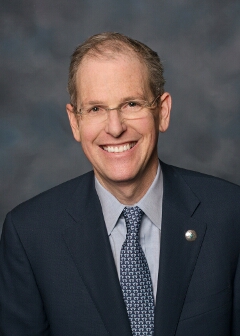News from the Session: October 2011
Greetings:
Nothing like a redistricting special session of the state legislature to highlight the challenges of reaching consensus in an ever polarized political landscape.
Here is a recap of the highs and lows and a look forward to the January session in 2012.
One Person One Vote is Easier Said than Done
The state constitution requires the legislature to meet every ten years to redraw political boundaries for the state Senate, the state House, the Public Regulation Commission, the Public Education Commission and the Congressional Districts. The central tenet of the process is the constitutional requirement that each New Mexican, regardless of age, citizenship, or voter registration have equal representation. Using the state Senate as a template, this means that each of the forty-two state Senators should have a district with a population of roughly 49,028 people. While this theory is straight forward, its application proves immensely challenging.New Mexico's population grew by thirteen percent over the last ten years with the vast majority of that growth in the urban parts of the state. One Senator on the west side of Albuquerque currently represents a district with 84,821 people. A colleague from the northeast part of the state has a district with 40,049 people. Since the legislature cannot create new Senate seats, this demographic shift necessarily means that a rural state Senate seat needs to be moved to the west side of Albuquerque to ensure that each person is equally represented.
Rural legislators of both parties do not want to reduce their voting strength. Redistricting plans in the state Senate were introduced by both Republican and Democratic members of leadership which stretched rural seats into more urban areas in an attempt to maintain status quo. While these plans did create roughly equal districts, they violated the "communities of interest" redistricting principle by asking legislators from Roswell, Carlsbad and San Miguel County to represent urban areas which have little in common with the predominately rural make-up of their districts.
In my opinion, it was this fundamental unwillingness to accept New Mexico's population shift, and not the political push to create districts benefiting Democrats and Republicans, which proved to be the downfall of bipartisan efforts to reach compromise.
Before this special session, I was asked whether I would support the concept of a non-partisan redistricting commission; namely, a group independent from the Legislature who makes redistricting decisions. My response was that I wanted to go through the current process to see how it works. Now having done that, I have to say that the concept of a commission looks better and better. The millions of taxpayer dollars which will be spent on legal fees in the Courts is not an acceptable alternative.
Jobs, Jobs, Jobs
Of the many items the Governor added to the special session, there were only two job creating measures the Legislature addressed and passed. The first was Senate Bill 1 sponsored by my colleague Senator Tim Keller. This bill cleaned up an existing procurement statute which gives New Mexico businesses a 5 percent preference. I say "cleaned up" because the law existed on the books but was so riddled with loopholes that it was not achieving its purpose. Just as an example, New York lawyers were using the statute to gain a preference on contract work over other out of state lawyers as the result of an exemption years ago for a New York bus company.The bill passed unanimously closing loopholes and truly helping New Mexico businesses. Most importantly, it is estimated it will create 3,000 to 4,000 New Mexico jobs.
The other jobs bill we passed is an 86 million dollar capital outlay package. This money comes from bonds against severance tax revenues the state earns on energy extraction, which pays for bricks and mortar projects. These state projects will put people to work and provide a much need infusion in this economy.
Unfortunately, the Legislature chose to pass an amount far less than the $212 million the Governor wanted. In one of the true bipartisan moments of the session, I joined with eight other colleagues in the state Senate to vote for the Governor's proposal which was supported by both labor and business. Because only nine of the fifteen Republicans agreed with the Governor, we were not able to pass this higher amount. This is unfortunate because this type of monetary stimulus to our economy is just what the State needs.
Issues for January, 2012 Session
New Mexico businesses need a level playing field when it comes to corporate taxes. I continue to receive strong bipartisan support for my push to pass the combined reporting bill which will make all out of state corporations pay the same corporate tax as their New Mexico competitors. Many have asked for a synopsis. Here is a link to an op-ed I wrote in 2009 which explains this process.To date, more than 2,800 citizens have signed a Petition to the Governor and legislators asking that this loophole be closed. If you have not done so, you too can sign on at the following link: http://signon.org/sign/level-the-playing-field-2?source=c.fwd&r_by=948753.
The other issue I will again push in 2012 is a bill to require "independent expenditure committees" to disclose donors. The US Supreme Court's misguided decision in Citizens United gives corporations and unions the right to spend unlimited amount of money influencing campaigns. In this political environment, voters should at least know who is paying for this influence. View All News

